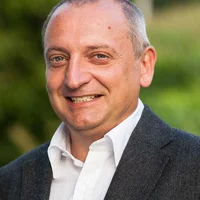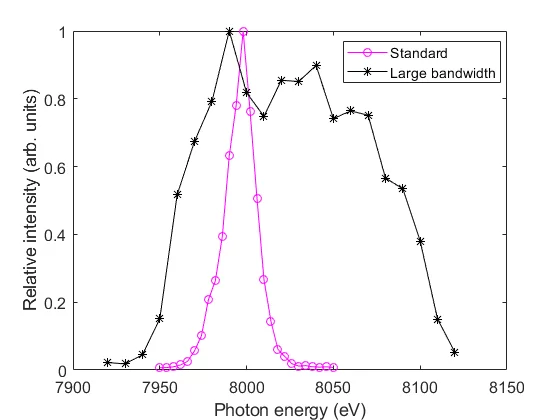Free-electron lasers (FELs) operating in the hard X-ray spectral range have revolutionized studies of ultrafast processes in fields as diverse as chemistry, biology and technology. While the majority of user experiments favors small spectral bandwidths, there is a class of experimental techniques profiting from larger bandwidths. For example, in crystallography nano-crystals injected into the FEL beam can have different orientations, such that the photon energy required for a Bragg reflection varies over a certain range. A significantly larger bandwidth therefore increases the chances for a Bragg reflection event, thereby boosting the data collection rate and saving wasted sample materials. If the frequencies are also correlated within the FEL pulse, the pulse can even be used for time-resolved measurements.
In its nominal (SASE) operation mode, the SwissFEL Aramis beamline provides pulses with relative bandwidth on the order of 0.1%, which can be further narrowed down with a monochromator. Obtaining significantly larger bandwidth represents a challenge and can be done by imprinting a strong energy chirp, i.e., a correlation between electron energy and longitudinal along the bunch, to the electron beam. The FEL process then locally adjusts the resonant FEL radiation wavelength to the electron energy as it varies along the bunch. As a consequence, the large electron energy chirp is conferred to a frequency chirp of the X-ray pulse.
To maximize the electron chirp we add up collective effects due to wakefields to the machine-applied energy chirp instead of compensating them as in the normal operation mode. The SwissFEL linac, operating at C-band frequency, is particularly suited for this method, as it provides strong wake fields at comparably low beam energy. By exploiting these features we were able to generate the largest bandwidth ever measured at a hard X-ray FEL, with relative bandwidth up to 2% at 8 keV photon energy. Future studies of this mode will focus on the improved control and a possible further enhancement of the frequency chirp.
https://journals.aps.org/prl/abstract/10.1103/PhysRevLett.124.074801
Contact:
Dr. Eduard Prat
PSI, Division Accelerator, Operation and Development
Forschungsstrasse 111, 5232 Villigen PSI, Switzerland
Telephone: +41 56 310 3701
E-mail: eduard.prat@psi.ch
Dr. Sven Reiche
PSI, Division Accelerator, Operation and Development
Forschungsstrasse 111, 5232 Villigen PSI, Switzerland
Telephone: +41 56 310 5119
E-mail: sven.reiche@psi.ch

